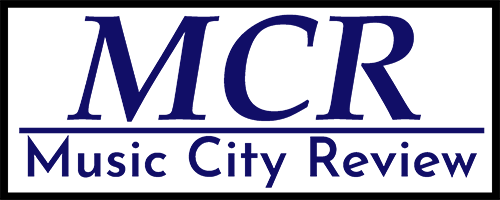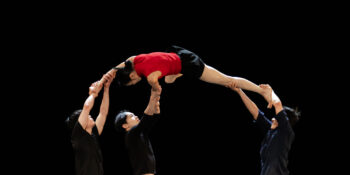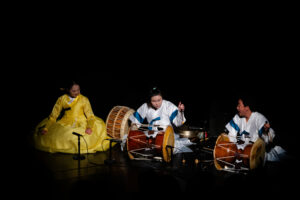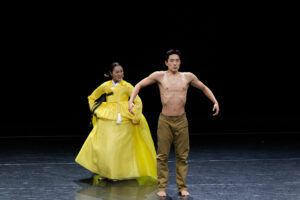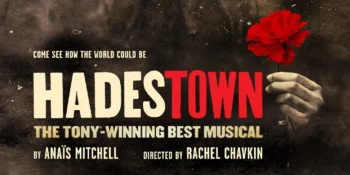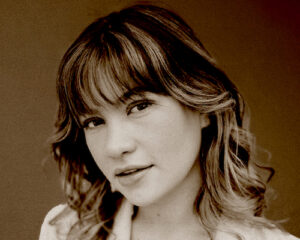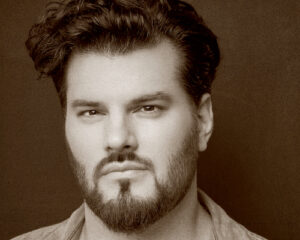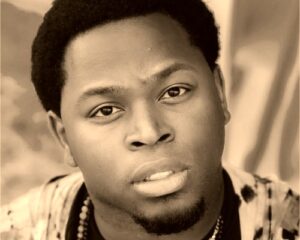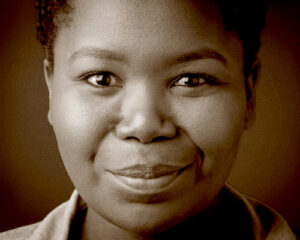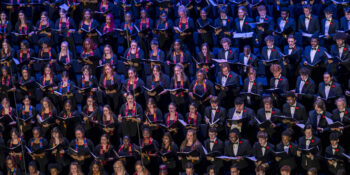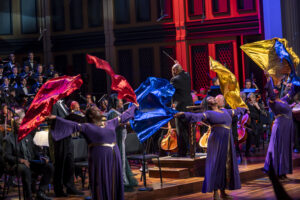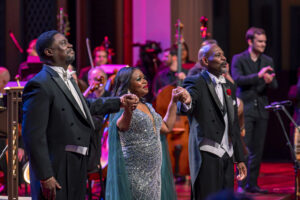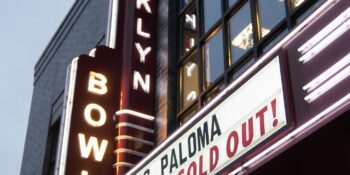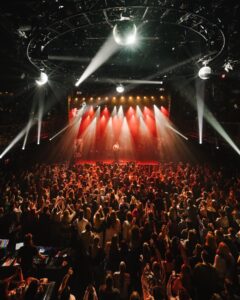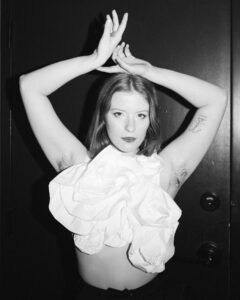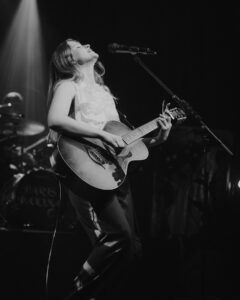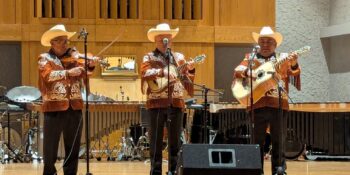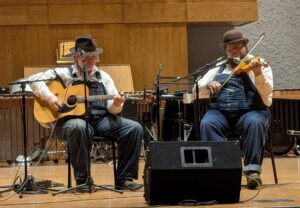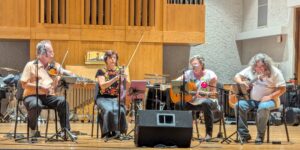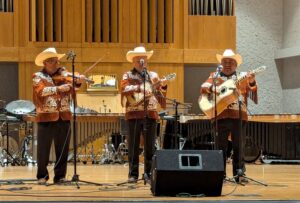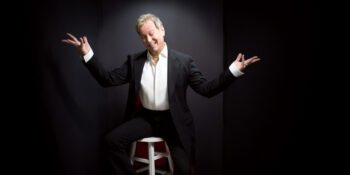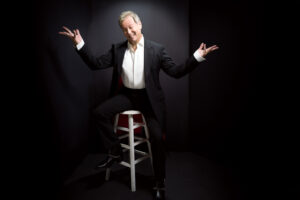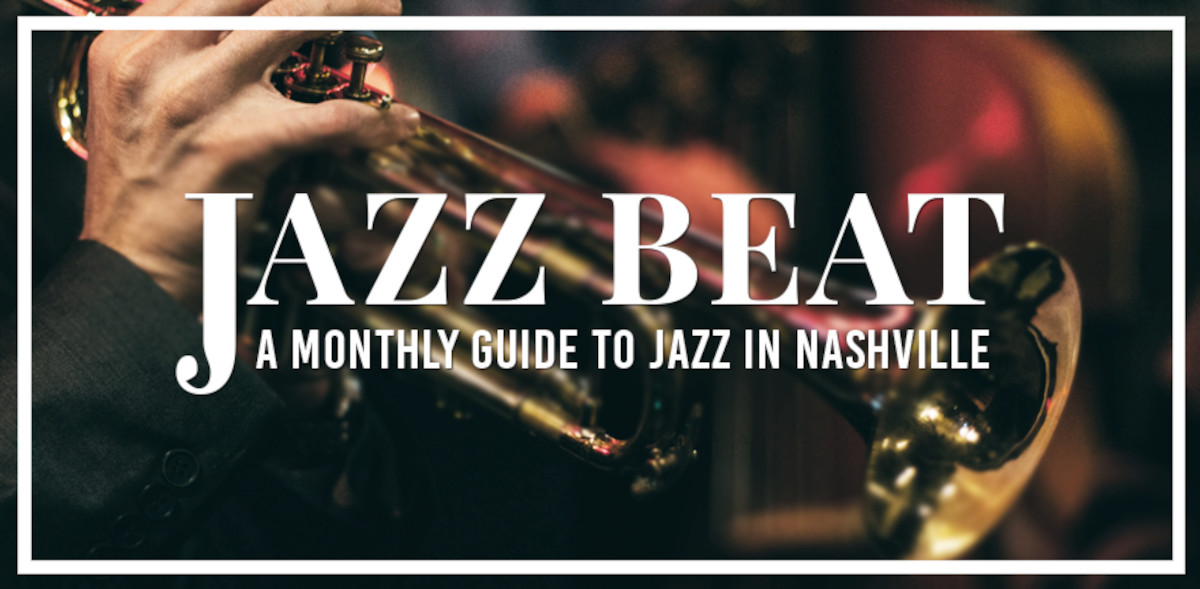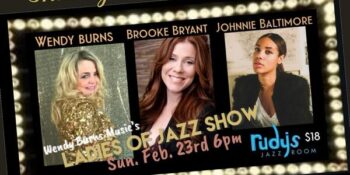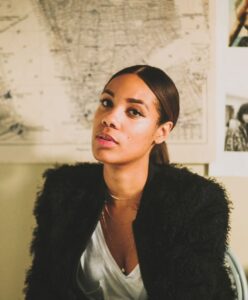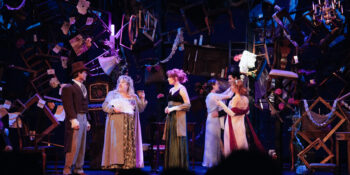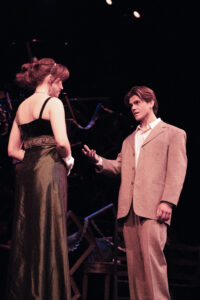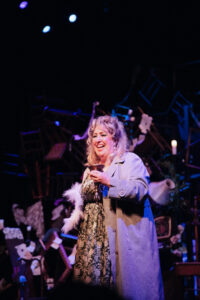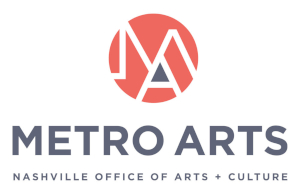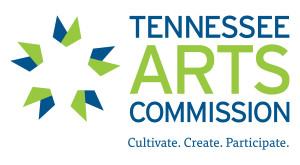The Jazz Beat
The Jazz Beat, March, 2025
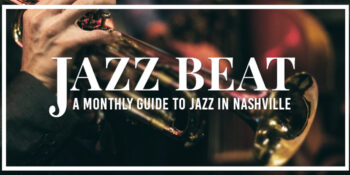
This Month’s Highlights
Here are the performances this month that I have picked out as really special, ones you won’t be able to catch any day of the week. They span across Nashville’s many great jazz venues and offer something of interest for everyone.
The Crescent City Hoodoo All-Stars Mardi Gras Celebration (2 shows) – Tuesday, March 4 – 6:00 PM & 9:00 PM ($20) (Rudy’s)
A rare occurrence at Rudy’s, the Room is open on a Tuesday night to celebrate Mardi Gras, embracing the club’s Cajun lineage. In addition to drink specials and authentic New Orleans cuisine, special six-piece brass band will be performing, with two chances to catch the show. Led by pianist/vocalist Chris Walters, the band features Brook Sutton on bass, Roy Agee on trombone, Chris West on saxophone, Andrew Carney on trumpet, and Josh Hunt on drums.
Dee Dee Bridgewater & Bill Charlap – Sunday, March 9 – 7:30 PM (Schermerhorn Symphony Center)
Two of the leading figures in today’s jazz scene come to the Schermerhorn stage. Dee Dee Bridgewater is a Grammy and Tony Award-winning jazz vocalist who puts her own unique spin on standards and jazz classics. Bill Charlap is one of today’s leading jazz pianists. Together, they form an intimate duo with a classic jazz sound.
Guitar & B3 Night ft. Bob Sabellico & Kyle Lehning – Friday, March 14 – 5:30 PM ($14) (Rudy’s)
An all-star band celebrates one of jazz’s most enduring formats, the organ trio. With three men who have a combined career of nearly a century, guitarist Bob Sabellico, keyboardist Kyle Lehning, and drummer Raymond Massey all have a wide base of experience touring with artists like The Guess Who, Randy Travis, Kenny Rogers, and many more.
Trombone Shorty & Orleans Avenue – Saturday, March 15 – 8:00 PM (Ryman Auditorium) ($40-55)
Superstar NOLA trombonist and bandleader Trombone Shorty comes to the iconic Ryman stage with his band. Born Troy Andrews, he has been entrenched in music practically since he was born, performing with the legendary Bo Diddley at Jazz Fest at the age of four, leading his own brass band at six, and the music has never stopped since. If you love classic New Orleans jazz sounds, this show is for you. Opening for the band is Tank and the Bangas, another band which, although more on the R&B/Soul/Funk side of things, I think will still be of much interest to jazz audiences.
Sandra Dudley Presents “Sing, Sing, Sing: A Vocal Tribute to the Ladies of Jazz” – Saturday, March 22 – 7:30 PM ($35) (NJW)
In honor of Women’s History Month, beloved Nashville vocalist and educator Sandra Dudley presents a special concert celebrating some of jazz’s most legendary women, including Sarah Vaughan, Carmen McRae, and Ella Fitzgerald.
Los Amigos Invisibles – Sunday, March 23 – 8:00 PM (The Basement East) ($45+)
Of particular interest to our Spanish-speaking jazz-loving community, Venezuelan band Los Amigos Invisibles is stopping by one of my favorite venues, The Basement East. Playing an electric mix of disco, acid jazz, and funk mixed with Latin rhythms, since 1991 this band has brought their explosive live shows all around the world, touring more than 60 countries.
Mark Guiliana – Thursday, March 27 – 8:00 PM (The Blue Room) ($35)
Virtuoso Mark Guiliana is a Grammy-nominated drummer and composer “around whom a cult of admiration has formed” (New York Times). He has shown himself to be extremely skilled across many genres, from acoustic jazz to progressive electronic music to rock, and has been a key collaborator with big names such as St. Vincent, Brad Mehldau, and even David Bowie. He now presents his first entirely solo work, ‘MARK’, showcasing his brilliant composing and ability to perform and layer percussion, piano, synthesizers, and more.
The Sofia Goodman Trio: “A Tribute to Women Composers in Jazz” – Saturday, March 29 – 7:30 PM ($35) (NJW)
Continuing with the celebration of women in jazz, percussionist Sofia Goodman presents her own concert, this time honoring women composers including Esperanza Spalding, Emily Remmler, and Alice Coltrane. Her band will feature Goodman on drumset, Matt Twaddle on piano, and Leland Nelson on bass.
What the World Needs Now: The Bacharach Songbook Live – Monday, March 31 – 7:00 PM (Ryman Auditorium) ($35-80)
While not exactly jazz, the classic pop tunes of Burt Bacharach certainly blur the lines between genres. This special act has been touring the country celebrating the music of the legendary songwriter. Featuring a nine-piece ensemble led by longtime Bacharach music director and arranger Rob Shirakbari, the act also boasts superstar singer Todd Rundgren as well as Wendy Moten, former contestant on The Voice, who has made appearances in this newsletter before.
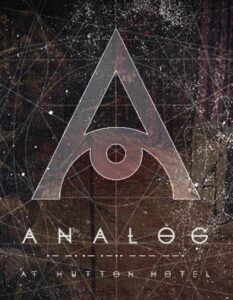 Analog at Hutton Hotel
Analog at Hutton Hotel
Analog Soul (multiple shows) – Sundays, March 2, 9, & 16 – 7:00 PM (Free GA / $20 reserved seating)
The Analog continues its Analog Soul series, featuring some of the city’s most promising emerging talent who are redefining soul music. All shows feature Will Davenport and select other artists. These shows are 21+.
Sarah Aili – Monday, March 31 – 7:00 PM ($10-25)
Artist Sarah Aili excels in many mediums, and is known for her work in music, theater, and storytelling. She was recognized by the Nashville Scene as one of the city’s top actors for her roles in Waitress and Innocent with Nashville Rep. She continues to delve into new and different creative projects, and this month at the Analog she presents a night of original songs, timeless American Songbook classics, and unexpected covers.
City Winery Nashville
Nashville’s City Winery is a beautiful venue that consistently features top-talent acts that span genres from Jazz to Americana to Hip Hop. The below performances showcase a mix of several genres, but will certainly be of interest to any jazz audience. Enjoy these concerts accompanied by a stellar selection of wine and delicious bites.
Main Stage
Chrissi Poland, Oz Noy, Dave Weckl – Tuesday, March 11 – 7:30 PM ($25-45)
Three of the biggest names in jazz and progressive music join forces at City Winery. Chrissi Poland is a powerhouse vocalist known for her emotive and heartfelt style combining jazz, soul, and pop influences. Oz Noy is one of the most celebrated guitarists in the modern scene, known for his innovations in the guitar world. He has collaborated with artists like Mike Stern, Eric Johnson, John Patitucci, and more. Dave Weckl is a world-renowned drummer who is perhaps most known for his work as a member of Chick Corea’s Elektric Band. They will also be accompanied by bassist James Genus.
Madeline Peyroux – Friday, March 28 – 7:30 PM ($65-95)
American jazz singer and songwriter Peyroux actually began her career on the streets of Paris, singing classical American blues and jazz songs. Her music interweaves jazz, blues, folk, and pop, and she isn’t afraid to speak her mind, with themes ranging from the observational to the political.
Cyrille Aimée – Saturday, March 29 – 7:30 PM ($30-55)
French jazz singer Cyrille Aimée comes to the Winery stage. She has a long discography going back to 2006, and her most recent album “a Fleur de Peau’ was nominated for a Grammy in the Best Traditional Pop Vocal Album category. She was won numerous vocal competitions, including the Montreux Jazz Festival Competition in 2007 and the Sarah Vaughan International Jazz Vocal Competition in 2012.
The Nashville Jazz Workshop
Moving on to Music City’s other great jazz venue, the Jazz Cave at the NJW is a venue with world-class acoustics, which consistently ranks in Downbeat Magazine’s list of Great Jazz Venues in the world. Tickets can be purchased through the Workshop website.
Jazz Cave
Piper Jones – Saturday, March 1 – 7:30 PM ($35)
Acclaimed vocalist and Nashville native Piper Jones returns to the Cave after a powerful performance there last summer. Mixing blues, jazz, and R&B, Jones has a soulful voice that is sure to enchant. Her band will feature Alex Murphy on piano, Jack Aylor on bass, and Christian Kyle Burgs on drums.
Kevin Whalum – Friday, March 7 – 7:30 PM ($35)
Another vocalist and Tennessee native, this time from Memphis, returns to Nashville for one night only for a performance at the Cave. The younger brother of renowned saxophonist Kirk Whalum, Kevin has had music in his life his entire life. Since his breakthrough in 1997, Whalum has toured and recorded continuously, and his talent has caught the attention of industry legends such as keyboardist George Duke, who described Whalum’s voice as “butter.”
Jovan Quallo Presents A Tribute to Kenny Garrett – Friday, March 14 – 7:30 PM ($35)
Acclaimed saxophonist Jovan Quallo presents a special tribute to one of jazz’s most influential sax-men, Kenny Garret, renowned for his fiery tone and groundbreaking compositions, Garrett has left a mark on every jazz saxophonist, and Quallo is no exception. Join him as he pays tribute to this legend of the genre!
The Lori Mechem Quartet Residency – Saturday, March 15 – 7:30 PM ($35)
Nashville legend Lori Mechem presents the first installment of her 2025 residency at the Cave, in celebration of 30 years playing together with her quartet. This band has recorded three albums together, as well as backed up artsits like Pete Christlieb, Jeff Hall, Donna McElroy, and more.
Sandra Dudley Presents “Sing, Sing, Sing: A Vocal Tribute to the Ladies of Jazz” – detailed above
The Sofia Goodman Trio: “A Tribute to Women Composers in Jazz” – detailed above
Community Events
Dee Dee Bridgewater & Bill Charlap at the Schermerhorn Symphony Center – detailed above
Rudy’s Jazz Room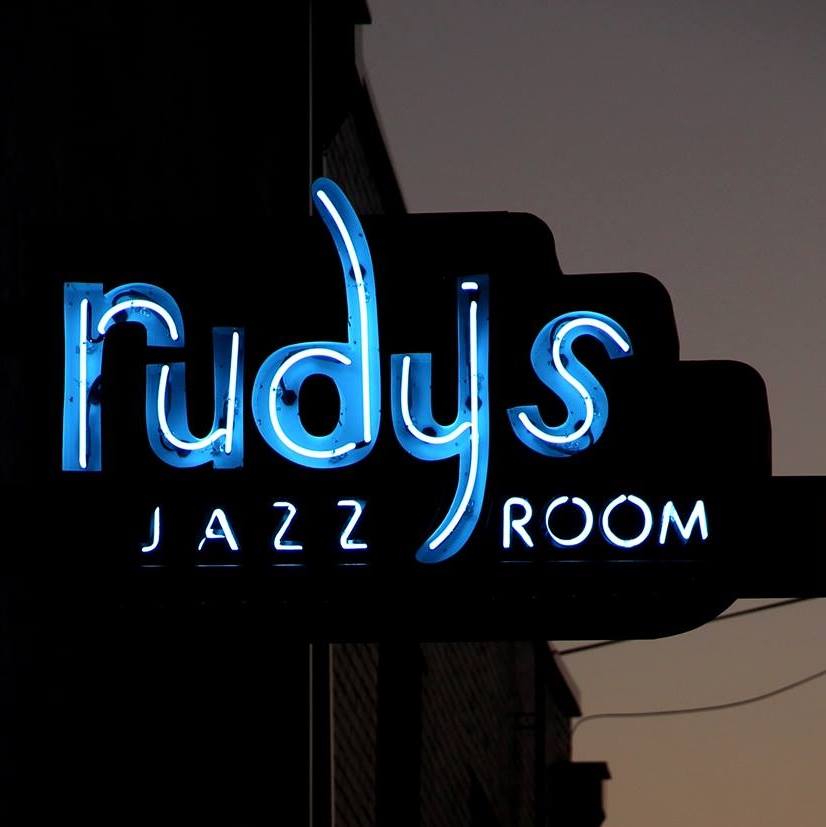
And now we move on to Nashville’s premier jazz club, with its cozy, intimate setting. I’ll start with some of the unique highlights for this month, then follow up with the great regular acts performing. Please note that some shows are one dollar cheaper if you purchase advance tickets. I have listed the door price for all shows.
Rudy’s Highlights
Below are the performances for this month that I’ve picked out as the real can’t-miss shows, some featuring touring artists from out of state, others featuring local artists giving specialized, unique performances.
Ryan Devlin’s “Side Step” – Saturday, March 1 – 8:00 PM ($22)
Boston-based saxophonist and educator Ryan Devlin returns to the Rudy’s stage with his band Side Step. The band features Jordan Learner on saxophone, Ian Ashby on bass, and Ryan Barski on drums.
Justyna & The Renaissance Men – Monday, March 3 – 6:00 PM ($14)
The eclectic and diverse members of this band combine around a love of foreign languages to offer a unique sound. Vocalist Justyna Kelley, daughter of country and bluegrass artist Irene Kelley, Giovanni Rodriguez, Dominican multi-instrumentalist who grew up abroad, Jerome Degey, guitarist originally from Paris and with a wide knowledge of Latin cultures, Gianluca Magalotti, multi-genre bassist from Rome, Italy, and Will Barrow, pianist from Gainesville, Florida who has traveled the world with his music, form this highly original band.
The Crescent City Hoodoo All-Stars Mardi Gras Celebration (2 shows) – detailed above
SINdustry Night w/ the Rougarou Brass Band – Thursday, March 6 – 9:00 PM ($15)
Featuring six-piece Rougarou Brass Band, those in the service industry (and proof of employment in the industry) get a ticket discount into Rudy’s on this night, which will also feature Freezer Sazerac drink specials and authentic New Orleans eats.
Ellisa Sun – Friday, March 7 – 5:30 PM ($15)
Guitarist Ellisa Sun returns to the Rudy’s stage. Originally from LA, Sun has toured extensively and her music has been featured in television programs like “LA’s Finest” (Sony Pictures), “Dollface” (Hulu), and “Kung Fu” (CW).
Jonathan Scales Fourchestra – Friday, March 7 – 8:00 PM ($25)
Hailed as one of the most innovative steel pannists the world over, Jonathan Scales has spent his career redefining the expectations of his instrument. Presenting compositions that are complex and difficult yet accessible and danceable, Scales and his trio of top-notch performers offer a truly unique experience.
Shaun Munday – Saturday, March 8 – 5:30 PM ($12)
Bassist Shaun Munday returns to the Rudy’s stage with his full band. Munday has studied and performed with some of the industry’s greats, including John Mayer, Esperanza Spalding, and Antonio Sanchez, among others.
Alyssa Allgood Quartet – Saturday, March 8 – 8:00 PM ($23)
Vocalist Alyssa Allgood was named a “Rising Star Female Vocalist” in the 2024 Downbeat Magazine Critics Poll. She just released an album last year title “From Here,” featuring a collection of original music recorded with acclaimed musicians Geoffrey Keezer, John Patitucci, Kendrick Scott, and Greg Ward. Her band for this performance will feature Jon Cowherd on piano, Jimmy Sullivan on bass, and Mark Raudabaugh on drums.
Jake Botts and Friends – Sunday, March 9 – 6:00 PM ($15)
Saxophonist Jake Botts has made quite the name for himself in the jazz scene, both in New York and right here in Music City. Originally from San Francisco, Botts cut his teeth in NYC, graduating from the New School for Jazz and Contemporary Music. He has recorded or performed/toured with a long list of some of the industry’s biggest names, including the Black Keys, Kelly Clarkson, Cory Wong, John Legend, Victor Wooten, and many more.
CONCURRENCE Presents Nashmatikz (a live Hip Hop experience) – Thursday, March 13 – 9:00 PM ($15)
CONCURRENCE returns for a one-night-only show, an experience they call Nashmatikz, a live Hip Hop experience. Complete with b-boy dancers, and turntables, elements of hip hop, electronica, and even swing are represented here. This show will feature Paul Horton (piano, samples), Greg Bryant (bass), Willie B (drums), Rashad thaPoet (emcee), DJ Colonel Austin (turntbables), and Nashville-based dance crew Music City Soul, as well as other special guests.
CONCURRENCE (2 shows) – Friday, March 14 & Saturday, March 15 – 8:00 PM ($25)
The highly-praised CONCURRENCE returns in their traditional format for two shows, each with special guests. The regular band consists of Paul Horton on piano and samples, and Greg Bryant on bass. The Friday show will feature Nate Smith on drums, and the Saturday show will feature Marcus Finnie on drums and Steve Pardo on sax.
Guitar & B3 Night ft. Bob Sabellico & Kyle Lehning – Friday, March 14 – detailed above
Brutal Hymn – Friday, March 14 – 11:00 PM ($12) Three of Nashville’s most impressive and experimental improvisers join together to form Brutal Hymn, consisting of Jayve Montgomery (flute/sax/bass clarinet), Randy Hunt (bass), and John Westberry (drums).
Jerome Degey Trio – Saturday, March 15 – 11:00 PM ($10)
Degey is a Nashville-based guitarist originally from Paris, France. His family heritage also features Afro-Caribbean roots, and together with his longtime interest and study of Brazilian culture, these influences create a rather unique musical blend. His trio features Charles Treadway on organs and Nioshi Jackson on drums.
“Disney Songs Reimagined” w/ the Miles Damaso Quartet – Thursday, March 20 – 9:00 PM ($15)
Percussionist, educator, and composer-arranger Miles Damaso leads his quartet in a special performance featuring unique arrangements of some of the best-loved Disney songs. The band features Don Aliquo on sax, Pat Coil on piano, and Leland Nelson on bass.
Ladies of Jazz – Friday, March 21 – 5:30 PM ($18)
Another Ladies of Jazz show at Rudy’s, featuring an excellent lineup of Nashville women, including Wendy Burns, jazz flutist and vocalist, and fellow vocalists Brooke Bryant and Johnnie Baltimore.
Pascal Le Boeuf’s “Ritual Being” Jazz + Classical Ensemble – Friday, March 21 – 8:00 PM ($25)
Ritual Being returns to Rudy’s. Led by Grammy-nominated pianist and composer Pascal Le Boeuf, Ritual Being hybrid jazz-classical ensemble featuring some of Nashville’s top talent, including Annaliese Kowert (violin), Alex Krew (cello), Ethan Jodziewicz (bass), and Jordan Perlson (drums).
The Eli Ibrahim Trio – Friday, March 21 – 11:00 PM ($10)
A trio consisting of Vanderbilt music students, the group is led by pianist Eli Ibrahim and features Ian Nussdorfer on bass and Nick Pacella on drums.
Rebecca Carlson – Thursday, March 27 – 9:00 PM ($14)
Jazz and blues vocalist Rebecca Carlson has made a name for herself across the country, taking stints based in New York City, Tucson, Los Angeles, and now Nashville. An extensive touring and recording career has made her quite an in-demand performer.
Abigail Flowers: Celebrating Women in Jazz – Friday, March 28 – 5:30 PM ($15)
As part of Women’s History Month, one of Nashville’s most beloved jazz vocalists Abigail Flowers presents a special concert celebrating the women of jazz. Known for her ability to sing in multiple languages, including Spanish, Portuguese, French, Italian, and Hawaiian, Flowers has teamed up with longtime collaborator Katie Blomarz-Kimball for his performance, presenting a mix of classic standards, original tunes, and innovative arrangements of contemporary songs.
Alec Newnam Quartet – Friday, March 28 – 11:00 PM ($10)
Bassist Alec Newnam brings his quartet back to Rudy’s, featuring Kevin Gatzke on tenor sax, Bill Alexson on piano, and Nate Felty on drums.
Greg Bryant Expansion – Saturday, March 29 – 8:00 PM ($26)
Bassist and broadcaster Greg Bryant leads his band featuring Jonathan Rogerson on guitar, David M. Rogers on piano, Willie B. on drums, and special guests. Since beginning his career in the early 2000’s, Bryant has recorded or performed with artists like Irma Thomas, Robert Walter, Eric Krasno, Charlie Hunter, and more.
The Jose Gobbo Trio ft. Don Aliquo – Saturday, March 29 – 11:00 PM ($12)
Jose Gobbo is a Brazilian jazz guitarist now based in Illinois. He has performed all over the US and been featured as a guest artist at a number of prominent universities. His trio with Jacob Jezioro on bass and Marc Widenhofer on drums will perform with special guest Don Aliquo on sax.
Kelli Cox Collaborative – Sunday, March 30 – 6:00 PM ($15)
Standout Nashville pianist Kelli Cox returns to Rudy’s with a special sextet configuration of her band, featuring Steve Herman, Greg Cox, Dan Hitchcock, Chris Autry, and Chris Brown. Cox has been performing professionally since she was fifteen, and has made herself a Nashville staple.
Rudy’s Regulars
Pat Coil Quartet – Saturday, March 1 – 5:30 PM ($15)
All-star Nashville pianist Pat Coil returns with a special configuration of his quartet format, featuring Don Aliquo on sax, Rob Linton on bass, and Marc Widenhofer on drums. As you all probably know by now, Coil is a highly in-demand pianist in Nashville and just about everywhere else, having toured extensively both nationally and internationally.
Don Aliquo (multiple performances)
One of Nashville’s most active and accomplished saxophonists, Aliquo will be leading performances several times this month, both in trio and quintet format. Don Aliquo Trio – Saturdays, March 1 & 8 – 11:00 PM ($10) Don Aliquo Quintet – Saturday, March 22 – 5:30 PM ($15) This quintet format will feature Roger Bissell (trombone), Ted Wilson (piano), Jacob Jezioro (bass), and Larry Aberman (drums).
Sully’s Swingin’ Sunday Supper – Sundays, March 2 & 16 – 6:00 PM ($12)
Every other Sunday, Rudy’s features a Sunday dinner, with one of Music City’s top bassists Jimmy Sullivan leading a swingin’ jazz band featuring rotating special guests, for which a unique dinner special is served just for the show.
Viktor Krauss – Wednesday, March 5 – 6:00 PM ($12)
Viktor Krauss is a bassist that has called Nashville home since 1992, and has over 600 credits to his name as either bassist, composer, or producer.
Geoff Pfeifer Quartet (2 shows) – Friday, March 7 & Saturday, March 22 – 11:00 PM ($10)
Playing a mix of Wayne Shorter tunes and originals, Geoff Pfeifer brings gritty, edgy, genuine NYC-style jazz to Rudy’s stage with his Quartet.
Re-Evolution – Mondays, March 10, 17, & 24 – 6:00 PM ($12)
This five-piece band is heavily influenced by classic jazz cutting-edge artists like Thelonius Monk, Wes Montgomery, John Coltrane, Bill Evans, and more. The band consists of Brian Cornish on saxophone, Regi Wooten on bass, Daryl Johnson on drums, Adam Charney on guitar and Alex Murphy on piano.
Dana Robbins Quintet – Wednesday, March 12 – 6:00 PM ($12)
GRAMMY-winning saxophonist Dana Robbins pays tribute to the Soul Jazz sound of the late 60’s and early 70’s, celebrating artists such as Les McCann, Eddie Harris, Jimmy Smith, and more. Robbins has either recorded or performed with many artists, including Keb’ Mo’, Aretha Franklin, Taj Mahal, Keith Urban, and more. Her band features David Santos (bass), Wes Little (drums), Phil Hughley (guitar), and Darius Mines (piano/B3 organ).
Jody Nardone Trio (2 shows) – Saturday, March 15 – 5:30 PM ($17) & Saturday, March 22 – 8:00 PM ($22)
Prominent Nashville pianist Jody Nardone brings his trio to Rudy’s for a classic jazz set. With a growing national reputation, Nardone seamlessly shifts from the “whispered beauty of Bill Evans to the percussive flights of McCoy Tyner.” (Michael McCall, Nashville Scene)
Bizz Bigsby – Wednesday, March 19 – 6:00 PM ($15)
Nashville native Bizz Bigsby shares his very personal music which tells the story of his life, influenced by everyone from Bill Withers to George Jones to James Taylor.
Stephanie Adlington – Sunday, March 23 – 6:00 PM ($15)
Another frequent visitor to the Rudy’s stage, award-winning vocalist, songwriter and vocal coach Stephanie Adlington is known as the “Siren of the South,” with an “unrivaled” take on the Great American Songbook.
PT Gazell & The Side Effects – Wednesday, March 26 – 6:00 PM ($10)
Jazz harmonica player PT Gazell brings his band back to the Rudy’s stage.
Giovanni Rodriguez & 12 Manos – Every Monday – 9:00 PM ($15)
A favorite on the Nashville Latin and jazz scene, multi-instrumentalist Giovanni Rodriguez presents an electric night of salsa, along with his band consisting of Rodriguez (timbales/vocals), Melvin Macias (piano/vocals), Yosvany Cordero (congo/bongo), Michael S. Morton (flute/vocals), and Isoel Villarrubia (bass).
Regi Wooten & Friends – Every Wednesday – 9:00 PM ($15)
Coming from a distinctly talented musical family, Regi Wooten is one of the most innovative and dynamic musicians on the scene today, pushing the boundaries of the traditional genres. Equally at home playing Hendrix as Wes Montgomery, Wooten assembles a group of some of Nashville’s best musicians to offer a night steeped in funk, jazz, soul, blues and rock.
Hot Club Gypsy Jazz – Every Thursday (except March 13) – 6:00 PM ($12)
Every Thursday night, Rudy’s honors its New Orleans and French roots by celebrating the vibrant music of Gypsy Jazz. These nights feature a variety of small groups either led or curated by New Orleans native Brook Sutton, all performing music in the style of the great Django Reinhardt and Stephane Grapelli. The bar will feature French Quarter-inspired cocktails as well as gumbo and beignets. Come out for as authentic a night as you can get without a trip to the French Quarter.
Rudy’s Jazz Jam – Every Sunday – 9:00 PM ($10)
I couldn’t make a list of Rudy’s events without including a shout-out for the regular weekly Jazz Jam the club hosts every Sunday night. Whether you are a jazz musician and you want to jam with your fellow artists, or you just want to come and enjoy what the local talent has to offer, the Jazz Jam is a great way to end your weekend.
Vinyl Tap
Vinyl Tap is a great little spot in Music City, a combined bar, record store, and music venue. You can often find great new or unknown-to-you acts playing the Tap’s stage.
Jack Silverman Quartet – Thursday, March 20 8 pm (Free)
Looking for some Nashville jazz with a psychedelic rock twist? Well, look no further! The Jack Silverman Quartet will bring some pleasing notes for your ears
The Underdog Nashville
Jack Ruch and Adam Wakefield Trio – Every Thursday– 7:00 PM ($10)
Jack Ruch returns this month with his organ trio, a classic jazz format.
University Jazz
The university semester is well under way, which means student, faculty, and guest concerts for the public to enjoy.
Vanderbilt – Blair School of Music 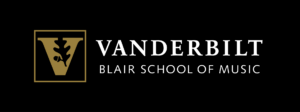
Vanderbilt Jazz Orchestra & Blair Jazz Choir – Monday, March 3 – 8:00 PM ($10) (Turner Recital Hall)
Belmont 
Belmont School of Music
Jazz String Septet – Sunday, March 2 – 6:30 PM (Massey Concert Hall)
Jazz Small Groups II & III – Monday, March 3 – 7:30 PM (Harton Concert Hall)
Jazz Band I & II – Thursday, March 6 – 7:30 PM (Massey Concert Hall)
Jazzmin – Friday, March 28 – 7:30 PM (Massey Concert Hall)
Regular Nashville Hangs
Bohemia After Dark: Live Jazz Band with Andrew Golden – Every Monday – 8:00 PM (Old Glory)
Tuesday Bluesday w/ Shantelle & The Juke Joint Band – Every Tuesday – 6:30 PM (Rawhides)
Weekly blues night with a different special guest each week.
Dinner & A Show – Live Jazz Band – Every Friday – 7:00 PM (Flamingo Cocktail Club)
Living Room Sessions – Every Friday & Saturday – 8:00 PM (W Nashville Hotel)
Regular weekly showcase featuring local indie, jazz, funk, and R&B bands.
Eastside Jam – Every Sunday – 9:00 PM (Inglewood Lounge)
This is not a traditional jazz jam playing standards, but rather an improv jam, but any jazz player or listener will still be interested!
Nightly Jazz at Skull’s Rainbow Room
Weekly Schedule:
- Monday: 5:15pm: Grant Garland; 7:30pm: Derrick Williams
- Tuesday: 5:15pm: Jay Vern; 7:30pm: Thea Danos & Dianne Sherrill
- Wednesday: 5:15pm: Taylor Tuke; 7:30pm: Derrick Williams
- Thursday: 5:15pm: John Paciga; 7:30pm: Derrick Williams & Laura Mayo
- Friday: 5:15pm: Jay Vern; 7:30pm: Dianne Sherrill & Laura Mayo
- Saturday: 5:15pm: Jay Vern; 7:30pm: Dianne Sherrill & Laura Mayo
- Sunday: 10:00am: Tabitha Meeks; 5:15pm: Jay Vern; 7:30pm: Perry Danos & Thea Danos
Nightly Jazz at Sinatra Bar & Lounge
Weekly Schedule:
- Monday: 5:00pm-6:30pm: Jeff Alfiero; 7:00pm-11:00pm: Ryan Driscoll
- Tuesday: 5:00pm-6:30pm: John Pahmer; 7:00pm-11:00pm: Derrick Williams
- Wednesday: 5:00pm-6:30pm: Jeff Alfiero; 7:00pm-11:00pm: Perry Danos
- Thursday: 5:00pm-6:30pm: Nick Fabian; 7:00pm-11:00pm: Daniel Sovich
- Friday: 5:00pm-6:30pm: Nick Fabian; 7:00pm-11:00pm: Ryan Driscoll
- Saturday: 5:00pm-6:30pm – Nick Fabian; 7:00pm-11:00pm: Thea Danos
- Sunday: 10:00am-2:00pm: Jeff Alfiero; 5:00pm-6:30pm: Nick Fabian; 7:00pm-11:00pm: Ryan Driscoll
